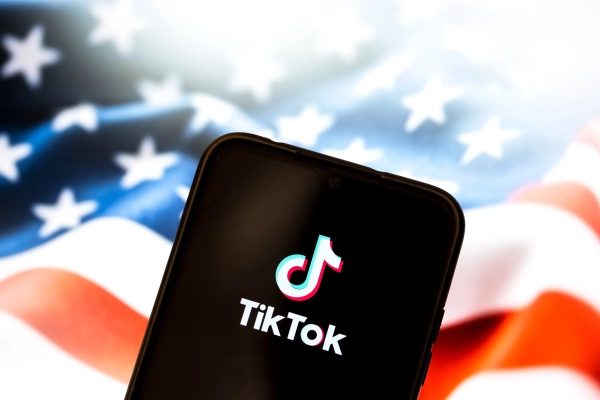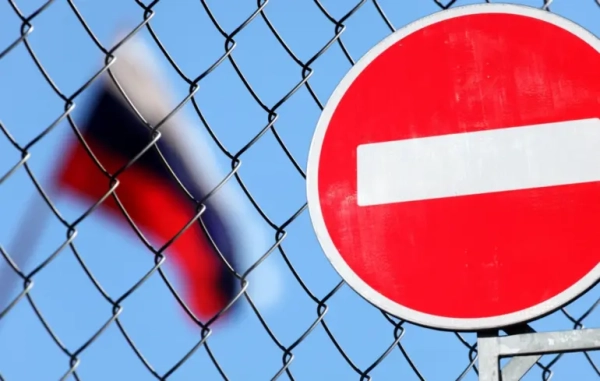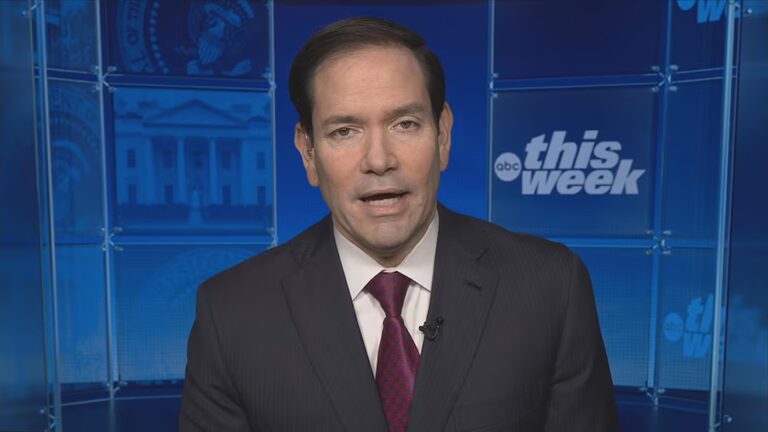
TikTok isn’t solely the globe’s most frequently downloaded application; it possesses the most formidable information dissemination capability globally.
This application has also developed into a political hot spot. ByteDance, the proprietor of TikTok, is a Chinese entity operating under Beijing’s sway. American lawmakers have been attempting to restrain it for several years, either through an outright prohibition or by mandating its acquisition by US-based investors. The return of Donald Trump to office has initiated a fresh stage in this dispute, one that could significantly alter the configuration of social media. Trump recently authorized an executive order, approving the creation of a fresh entity known as TikTok US, thereby permitting the app’s sustained accessibility within America, irrespective of the “ban” enacted by Congress in 2024. Allies of Trump, namely Larry Ellison (Oracle’s CEO), Michael Dell (of Dell Technologies), along with the Murdochs, are expected to participate in the administration of the novel enterprise. The arrangement still awaits approval from China.
Emily Baker-White serves as a senior writer at Forbes and is also the author of “Every Screen on the Planet: The War Over TikTok.” Her investigative journalism brought to light how ByteDance personnel obtained access to the data of US users, and the significant influence that TikTok’s internal mechanisms bestowed upon the firm in shaping our perceptions.
I welcomed Baker-White onto The Gray Area to delve into the latest advancements concerning the prospective US-China arrangement involving TikTok, the tactics employed by Washington and Beijing within this context, and the reasons underpinning the app’s ascent to becoming a cultural powerhouse. As customary, the comprehensive podcast offers much more information, so be sure to listen and subscribe to The Gray Area on platforms such as Apple Podcasts, Spotify, Pandora, or any other podcast provider of your preference. New episodes are launched each Monday.
This conversation has undergone revisions to ensure it is concise and easily understood.
TikTok stands apart from other social platforms. What contributes to its addictive nature?
Zhang Yiming, the founder of TikTok, held the conviction that information has a greater capacity to locate individuals compared to the reverse. In earlier platforms, users would follow specific accounts and actively search for content. In contrast, TikTok initiates automatically upon opening; observing user engagement duration and interaction patterns. The seamless nature of the experience enables it to discern user preferences without requiring any active input.
And it’s structured to erode volition — feeding you items you’re inclined to want without solicitation.
Precisely. Furthermore, this is insidiously welcomed. Had it not been, engagement would cease. Unknowingly, agency is forfeited due to the product’s enjoyable quality.
Does the appeal partially stem from circumventing thinking processes?
Decision-making can be draining. It was once possible to merely wait in checkout lines without further demands; an experience that now appears unbearable. When did occupying oneself during every brief cessation of daily activity become compulsory?
TikTok’s For You feed is a predictive apparatus grounded in revealed choices, superseding verbalized inclinations. How does that affect user mentality? How does the content perform, when juxtaposed with Facebook/Instagram/X?
TikTok catalysed a larger transformation, diminishing the volume of material displayed from known associates in favor of content generated by professional creators. This trend is evident on TikTok and gaining prevalence across both Instagram and Facebook, bearing more semblance to Netflix than the primordial Facebook; visitors are less often interested in updates from acquaintances.
I resisted for an extended period, yet, I did experiment with TikTok in the context of this discussion. It operates as genuine social media gold. One can observe, from the time of registration, the system acclimating, anticipating desires and offering customized digital stimulants.
Most individuals concur upon testing, mirroring the awareness manifest within Instagram Reels.
Switching gears to moderation. Given our discussion of algorithms, what is the role of people at TikTok?
The current paradigm mirrors those of other extensive UGC [user-generated content] platforms. Algorithms recognize likely violations; substantial moderator teams then enforce standards and refine these mechanisms. Existing policies in the US are broadly in line with those of competitors. Early manifestations were contrasting, featuring “Chinese” policy defaults subsequently “Westernized.” Of specific mention is the internal heating capability.
“Remember, you’re making fewer choices about what to see. That means you’re ceding more control over your information diet to a faceless machine — and the people who build and govern it.”
The heating button—how does it function?
Certain staff can assign a video a fixed number of views, ranging from 5,000, 50,000, up to 5 million, overruling the recommender. Such primary thrust frequently ignites sustained natural expansion. In the beginning, there was wide access. Humans used it to school the system on what “good” looked like during the infancy of the algo. Subsequently, the marketing sector used it to attract creators and partnerships. TikTok ultimately restricted access and issued stricter policies, despite which, instances of misuse occurred and perhaps continue.
Other platforms elevate and demote content too. How is this different?
Every platform calibrates distribution. Unique here was the blatant, granular, easily available nature of the “big red button” — in the past, at least. (My Signal is open for those at other platforms who may have similar tools.)
How do you perceive TikTok’s cultural influence and political power relative to Facebook and Twitter?
Facebook and Instagram can be equated more fairly in regard to their size; YouTube’s size is enormous. TikTok, however, remains exceptionally sizable—perhaps mirroring the scale of Facebook from approximately 2019 or 2020, if not larger. Critically, users are making less conscious choices about their viewing material, yielding greater authority over their news intake to an anonymous system and those that engineer and manage it.
How much power does Beijing hold over TikTok? Is “leverage” the more suitable term?
Leverage is more fitting. In China, authorities hold the ability to compel employees, “do this or else,” by threatening their relatives. Should a China-based ByteDance/TikTok employee have means to access US data or affect its ranking, the government might compel them. Concern centres on that potential. There’s little publicized evidence illustrating extensive implementation—the capacity doesn’t guarantee performance—but leverage continues while China-based employees with applicable access exist.
Is there evidence China has used TikTok as an ideological weapon?
I haven’t witnessed open evidence in the US that the PRC manipulates discourse through TikTok. Years prior, TikTok upheld restrictive policies regarding Chinese themes; these were revised. There exists categorized material—vaguely touched upon within the TikTok legal documents—that, as US officials claim, relates to manipulation abroad, which I haven’t viewed.
ByteDance’s strategy in responding to America’s TikTok restriction was Project Texas—separating US data under Oracle. How did that proceed?
Conceptually akin to the idea of a “driver carries no cash,” [The US] sought to eliminate China-based access [to Oracle] to block coercion that may lead to US data breaches. Billions were invested in attempting division. Yet, given numerous internal tools and channels, comprehensive prevention proved Sisyphean. Progress was made, but achieving perfect certainty proved intractable for the final stretch. Ultimately, the US expressed doubts that a remedy, shy of complete separation, could ever be foolproof.
What made that technical challenge so daunting in practice?
If you’ve been within a big tech company, you know how large the volume of internal instruments is and how connected they are. Several hundreds support TikTok. An infrastructure of over five hundred internal apps undergirds the user-facing product. Blocking cross-functional dataflow was a task both labyrinthine and Sisyphean. Most routes were closed, yet the closing of those last pathways proved close to unattainable.
Related
- Brief videos are altering our brains
- Monitoring display time won’t spontaneously motivate you to drop your device. This is what may.
Walk me through the policy saga.
Trump initially endeavored to ban [TikTok], later moving to mandate a sale; employing an incorrect legal methodology leading to his defeat in court. Biden’s cohort undertook Project Texas negotiations over two years, before pivoting to a strategy of “sell or be banned,” lobbying Congress for legislative passage. ByteDance challenged this; and the case proceeded to SCOTUS, upholding the law. On the eve of [Trump’s second] induction, TikTok briefly shut down. After entering office, Trump directed DOJ to cease enforcing this law. TikTok has existed within this indeterminate condition since.
And TikTok publicly thanked Trump for “saving” it.
Quite a shift, given their earlier advertisements, “Donald Trump isn’t on TikTok—download now.”
Following your reports, what are your feelings regarding TikTok currently?
Personally, I harbor a dislike for autoplay video, irrespective of the platform. Having downloaded TikTok for investigative intentions, notwithstanding amusing animal content, I am not naturally disposed towards video usage. This potentially averted dependence.
You conclude the book, noting Zhang Yiming is already progressing towards AGI (artificial general intelligence). Which seems…noteworthy.
He’s a builder type. Having largely resolved the intricate challenges present at TikTok, he is progressing into generative AI as the next front. The TikTok narrative deviates from AI; core topics—agency, control, who determines perception—remain the same.
When dissecting any algorithm, swapping out the word for the name Bob is key. Similarly, should Bob be prohibited from arbitrarily determining industry prices, no algorithm should. If Bob should not have unhindered entry to everyone’s Social Security Numbers, an algorithm should be likewise restricted. People design and engineer algorithms to serve interests—once this is discarded, algorithms gain unwarranted power.
While not typical, amendments are warranted given potential shifts in TikTok’s legal fate subsequent to this conversation. What are the knowns today?
The volume has grown, even if the specifications remain vague. The US and Chinese factions are citing advances. Trump cites the deal as fulfilled and extends the non-enforcement of prohibitive laws. Reporting intimates that he will sign an order that declares the agreement falls within previous statute from last year—which he holds considerable latitude to influence. Oracle, a cloud/TTP for TikTok, Andreessen Horowitz, and conceivably Murdochs comprise prospective US buyers/overseers. How power divides across terms is yet to be clear.
What contours of this arrangement do we know?
Sides are asserting ByteDance’s retention of algorithmic ownership for the recommender; US TikTok would receive licensure. The spectrum of “licensure” can span free use to severe constraints. How liberal it is will dictate true isolation. Expect to also see the word “lease”—the designation has a lesser impact than the regulation provisions.
Oracle states, the algorithm will undergo “complete retraining from the bottom.” What is implied here?
Models are as proficient as their training dataset. Encompassing scraped parts of the public Web, TikTok formulated this database over years from extensive mixed sources. Is ByteDance going to deliver that database? Do they still have it? If the new stewards struggle to echo earlier contributions, users are apt to spot differences from a “new TikTok,” an obvious hazard.
Will Oracle keep American users’ data walled off from China?
In terms likely paralleling those of the contemporary TikTok US Data Security construction, new US data is stored in an Oracle-controlled TTP, [trusted technology partner] walled from ByteDance. The preliminary agreement seeks to formalize and perpetuate this setup.
What gains beyond a copious abundance of cash do the new US shareholders amass?
Cash is ample. Yet power over verbal guidelines, for example, bullying/hate policies, moderation stance, key signals, come to mind. Many from the left perceive handing this immense speech outlet to Trump allies. Prudent owners are not apt to overtly politicize fast, given the evident business risks (as observed with Twitter/X). At the most critical level, the proprietors direct governance.
Well, it does appear to be Trump handing it over to his powerful political allies. People like Larry Ellison of Oracle, Marc Andreessen, the Murdochs of Fox News — they’re all involved in this potential deal and it has a whiff of corruption. Am I missing something here?
I do not regard this as inaccurate. If the Soros Group yearned inclusion, or Warren Buffet, I remain unconvinced Trump would seek to ensure it occurs. You’re scrutinizing a president engaging in private sector initiatives and proprietary agreements at levels outpacing any former president in recent history.
He’s transmitting the capacity for discourse to his associates, figures that he believes will use the platform with principles he endorses. This arrangement strikes as unusual. Reviewing the law Congress passed, there was an evident endeavor to restrict presidential power, yet its wording leaves great power at his discretion. Most drafters, I believe, did not envision his level of involvement in palpable self-dealing.
Had that been envisioned, the law might have been drafted in dissimilar fashion. As I see it, this is correct, and is beyond the scope of what the crafters perceived when the current moment materializes.
How more favorable is this configuration than that of Beijing’s controlling TikTok?
The volume’s key anxiety—the author’s phrase was “authoritarian shakedown”—consistently pointed toward those states unable to perpetuate the same. The present exposes a US executive manipulating distribution to penalize critics. Our task is now to identify the “superiority” of each, and those CCP-like tactics are causing anxiety.
Listen to the rest of the conversation and be sure to follow The Gray Area on Apple Podcasts, Spotify, Pandora, or wherever you listen to podcasts.
Source: vox.com






